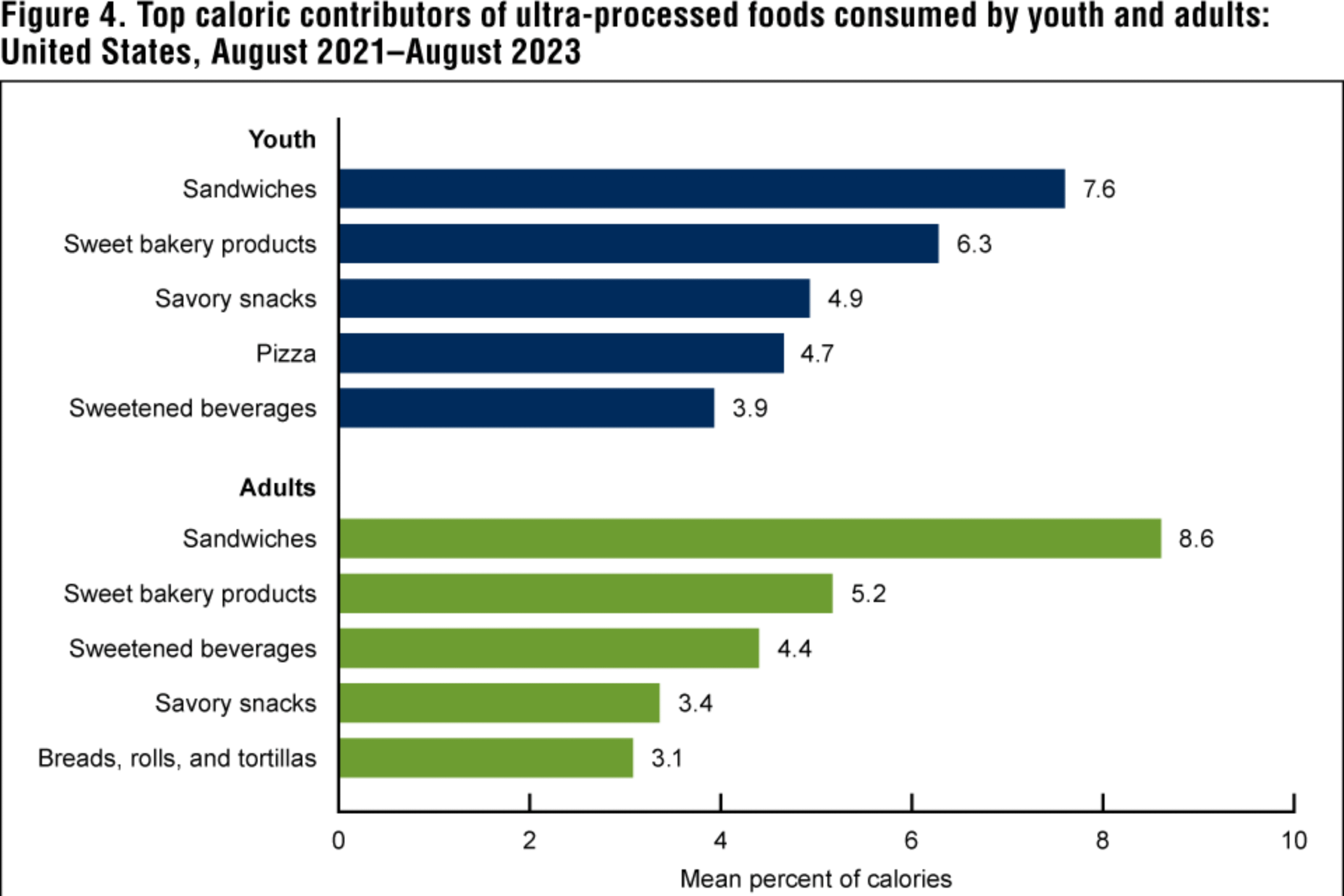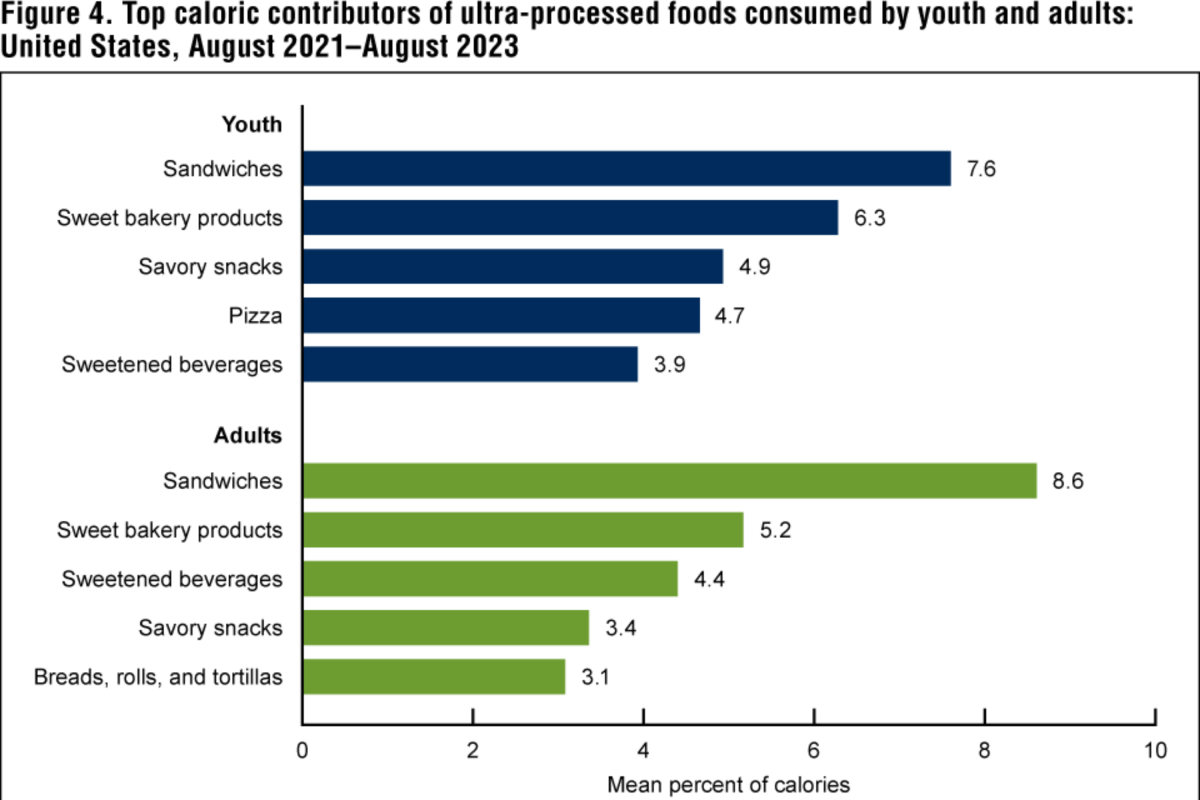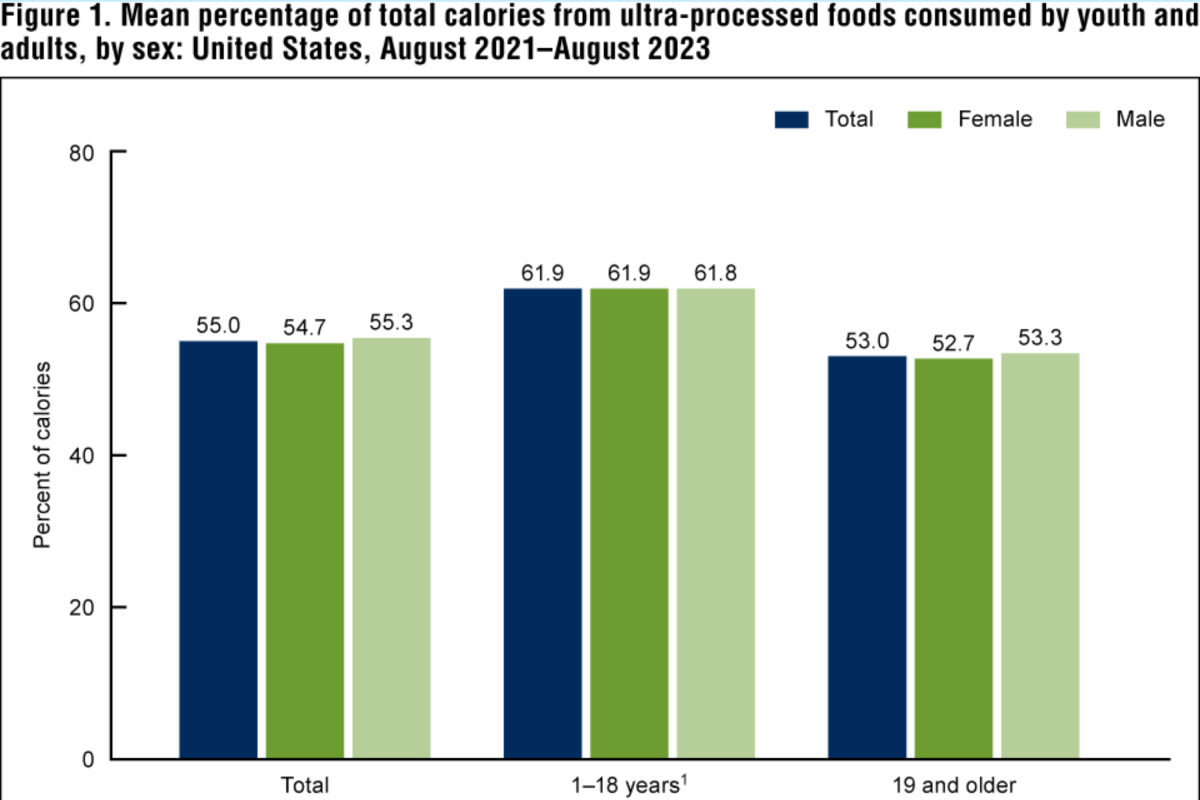
Americans consume more than half their calories from ultra-processed food with burgers, sandwiches, sweet bakery products and savory snacks among the biggest contributors, according to a new federal report.
The study from the U.S. Centers for Disease Control and Prevention (CDC) found that Americans aged one year and older got an average of 55 percent of their daily intake from such food.
While nutrition research has shown for years that ultra-processed foods make up a big chunk of the US diet, the CDC has for the first time confirmed those high levels of consumption, using dietary data collected from August 2021 to August 2023.
Why it Matters
The new CDC report used the most common definition of ultra-processed foods. based on the four-tier Nova system that classifies foods according to the amount of processing they undergo. Such foods tend to be “hyperpalatable, energy-dense, low in dietary fiber and contain little or no whole foods, while having high amounts of salt, sweeteners and unhealthy fats,” the CDC report said.

Centers for Disease Control and Prevention
Previous studies have linked ultra-processed food to obesity, diabetes and heart disease, but they haven’t been able to prove that the foods directly cause those chronic health problems. One small but influential study found that even when diets were matched for calories, sugar, fat, fiber and micronutrients, people consumed more calories and gained more weight when they ate ultra-processed foods than when they ate minimally processed foods.
While the CDC report noted a modest decline in consumption among adults (from 55.8 percent to 53 percent) and youth (from 65.6 percent to 61.9 percent) over the past decade, health officials caution that these foods remain a dominant source of calories in the American diet.
The report has been published amid growing scrutiny of such foods with Health Secretary Robert F. Kennedy Jr telling Fox earlier this year, “We are poisoning ourselves, and it’s coming principally from these ultra-processed foods.”
What To Know
The CDC report highlighted consumption of ultra-processed food was notably higher among youth (aged 1—18), who received nearly 62 percent of their daily calories from such foods, compared to 53 percent for adults.
Among youth, the top sources of calories from ultra-processed foods were:
- Sandwiches (including burgers)—7.6 percent of total calories
- Sweet bakery products—6.3 percent
- Savory snacks—4.9 percent
- Pizza—4.7 percent
- Sweetened beverages—3.9 percent
For adults, the leading contributors were:
- Sandwiches (including burgers)—8.6 percent of total calories
- Sweet bakery products—5.2 percent
- Sweetened beverages—4.4 percent
- Savory snacks—3.4 percent
- Breads, rolls, and tortillas—3.1 percent
Analysis also showed consumption of ultra-processed foods was higher among lower income adults and among younger people, with adults 60 and older and young children consuming fewer calories from these sources.

Centers for Disease Control and Prevention
What People Are Saying
Anne Williams, co-author of the report and CDC nutrition expert, said: “The results were not surprising,” but added, “consumption of ultra-processed foods appeared to dip slightly over the past decade.” Williams said she could not speculate on the reasons for the decline or whether consumption of less processed foods had increased.
Andrea Deierlein, a nutrition expert at New York University who was not involved in the research, stated: “People are trying, at least in some populations, to decrease their intakes of these foods,” highlighting possible growing awareness among Americans about the potential harms of ultra-processed food.
What Happens Next
U.S. health officials recently said there are concerns over whether current definitions of ultra-processed foods “accurately capture” the range of foods that may affect health.
The U.S. Food and Drug Administration and the Agriculture Department recently issued a request for information to develop a new, uniform definition of ultra-processed foods for products in the U.S. food supply.
This article includes reporting from The Associated Press.




